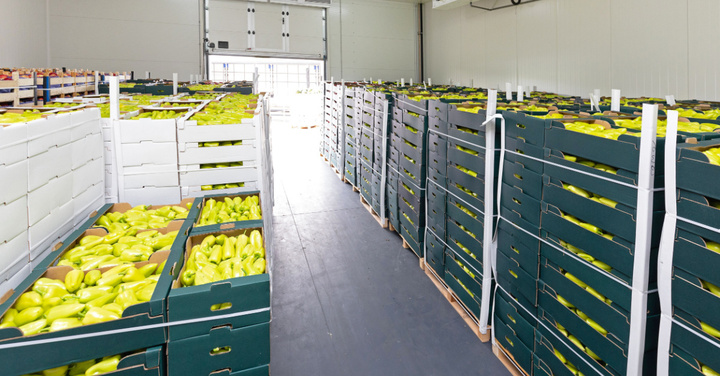With 1.7 million dry vans on the road and only 400,000 reefers, many shippers and freight brokers do not think about cold chain visibility. But those who ship temperature-sensitive goods like fresh produce depend on cold chain logistics throughout the supply chain journey to ensure delivery of top-quality goods that are safe to consume. Cold chain visibility can mean the difference between an order delivered to a grocery store on time and in full and thousands of dollars of waste due to food spoilage.
While there is no way to avoid the increased risks associated with moving temperature-sensitive freight, this article explains how improved cold chain visibility is critical to better managing these fresh food shipments.
What is Cold Chain in Logistics?
The cold chain involves moving temperature-sensitive goods that require refrigeration for storage and while in transit. Different shipments require different temperatures, but generally, the cold chain covers 35°F (2°C) to 45°F (8°C). These shipments must use a refrigerated trailer for transportation, also known as a reefer. Cold chain transportation is necessary for various loads, especially fresh fruits and vegetables.
When managing cold chain supply logistics, there are four main factors: packaging, storage, transportation, and temperature tracking.
- Packaging – Shipments may require specific types of packaging using insulated materials like styrofoam to add protection from changing temperatures.
- Storage – From harvesting to final delivery, fresh produce has strict requirements to keep it in peak condition. This starts with cold storage after packing and at any point in the chain while not in transit.
- Transportation – Shipments are transported in reefers with the refrigeration unit set to the temperature specified on the cooling order.
- Temperature tracking – Accurate cold chain tracking is necessary to prove no temperature excursions occurred during the journey. Shippers previously relied on truck drivers to manually record this information. Today, technology like temperature loggers, such as Tive Tag, automatically record temperature data—which also supports a shipper’s compliance needs.
What are the Top Challenges for Cold Chain Logistics?
In addition to the disruptions and potential for delays common in any supply chain, cold chain shipping presents shippers with several unique challenges. Here are three of them.
- Equipment failure – Shipment quality depends entirely on the refrigeration units in trailers and cold storage facilities; any equipment breakdown puts the entire load at risk.
- Human error – Failing to follow the correct loading procedures or incorrectly setting the reefer unit can lead to significant product damage.
- Gaps in the cold chain – Shippers must also identify areas of cold chain logistics where they need to improve practices and update procedures to reduce risks of product degradation.
Equipment failure and human error are impossible to avoid entirely. After preventative measures are taken, managing these challenges becomes a matter of getting notified when they occur—in other words, having cold chain visibility, which also provides detailed data to identify and fix gaps in the cold chain.
How Does Visibility Impact Cold Chain Shipments?
Visibility is the ability to track and monitor information within the supply chain. With the cold chain, in particular, there is a huge opportunity to use visibility data for making operational improvements and responding to changes and disruptions.
With cold chain monitoring, shippers can track changes in the temperature of their loads in real-time. If there is a problem—like a temperature excursion—the system sends notifications so they can investigate before a major problem develops. Improved cold chain visibility enables shippers to mitigate risk and increase agility so they can better respond to their customers’ needs.
When shipping food like fresh produce, the benefits of visibility ultimately lead to better sustainability for the supply of food and less food waste. An estimated $408 billion worth of food is thrown out each year in the U.S. By improving cold chain logistics, shippers can do their part to help reduce this number.
How Hwy Haul Provides Better Visibility for Food Shipments
Hwy Haul offers cold chain visibility and the platform to support this data for fresh produce shipments. Shippers receive notifications on load conditions like temperature, humidity, and shifts inside the trailer so they can make informed decisions fast. Hwy Haul also offers route optimization, data insights, and analysis, all from a single platform where we also provide reliable capacity with touchless load booking. To learn more about cold chain visibility and shipping fresh produce with Hwy Haul, reach out to us today.
